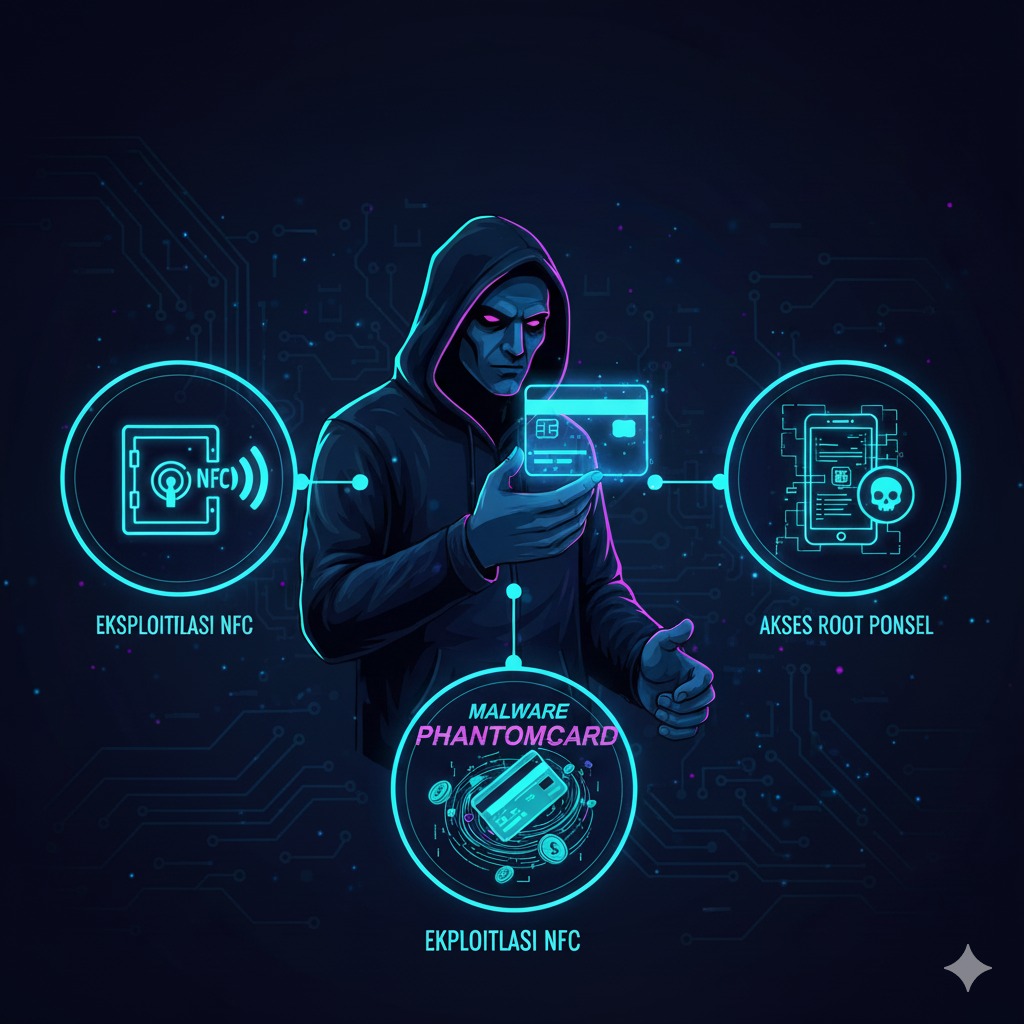Welcome to VelSicuro.com | Cybersecurity Solutions
- hub@velsicuro.co.id
- HEAD OFFICE JHONTAX TB SIMATUPANG, GEDUNG
- Home
- Article
New Bank Theft Mode: PhantomCard Malware Exploits NFC and Phone Root Access.

New Bank Theft Mode: PhantomCard Malware Exploits NFC and Phone Root Access.
The banking world is facing a wave of sophisticated new cyberattacks, led by the Android malware named PhantomCard. This attack, first detected in Brazil but with the potential to spread to Southeast Asia and globally, is specifically designed to steal bank card data by exploiting Near-Field Communication (NFC) technology, social engineering techniques, and even vulnerabilities in rooted devices.
PhantomCard's Modus Operandi and NFC Crime
PhantomCard is a trojan offered through the Chinese Malware-as-a-Service (MaaS) model called NFU Pay. It enables cybercriminals to conduct transactions as if they were holding the victim's physical card.
- Tactical Distribution: The malware is spread via a fake website that mimics the Google Play Store, disguised as a card security application called "Proteção Cartões." Scammers use smishing or social engineering tricks to direct victims to the fraudulent download page.
- Real-time Data Theft: Once installed, the app instructs victims to tap their physical card against the back of their phone for a fake "verification." During this process, the card data (including the PIN, if requested) is relayed in real-time to the attacker's server, allowing them to use it for illegal transactions.
- Criminal Network: PhantomCard is openly marketed by resellers like the Go1ano developer, alongside similar products (SuperCard X, KingNFC, X/Z/TX-NFC), illustrating that cybercrime is now operating like an organized digital service.
Other Threats and Evolving Attack Techniques
The threats against banking are not limited to NFC relay fraud:
- Ghost Tap: A Mandarin-speaking criminal syndicate uses a similar NFC relay technique called Ghost Tap. They steal card details, integrate them into digital wallet services (Apple Pay/Google Pay), and use burner phones operated by couriers (mules) to purchase physical goods via contactless payment, which are then resold for profit.
- SpyBanker: This malware spreads via WhatsApp, masquerading as a bank service application. Its function is to divert the victim's incoming phone calls, allowing the attacker to steal OTP codes and call-based verifications.
- Root Exploitation: Researchers have discovered the misuse of Android rooting frameworks (such as KernelSU, APatch) by criminals to gain full control over victims' devices, leveraging weaknesses in the system's authentication layer.
- Fake Apps: Fraudulent applications mimicking major bank services are circulating outside the Play Store, acting as a dropper to install further malicious software, including the XMRig cryptocurrency miner.
Implications and The Need for Collaboration
The Malware-as-a-Service model has made cybercrime more accessible, organized, and cross-border.
Financial institutions must immediately upgrade their real-time fraud detection systems and multi-factor authentication, while also educating customers. Given the continuous evolution of these threats (as demonstrated by Ghost Tap and other Android malware), close collaboration is essential among banks, technology providers (such as Google, which states that Play Protect can block known malware), and global cybersecurity authorities.
Source : https://csirt.or.id/berita/ancaman-baru-phantomcard-serang-bank
Popular article
-
 06 March 2023
06 March 2023Comodo Security Solutions Rebrands to Xcitium
-
 21 February 2023
21 February 2023Indihome Attacked by Hackers, Data of 26 Million Customers Leaked
-

-
 04 November 2023
04 November 2023Bagaimana Cara Memilih Solusi EDR yang Tepat Untuk Bisnis Anda?
Categories
Tags
Need Any Technology Solution
Let’s Work Together on Project
Contact Information
- 087890908898
- hub@velsicuro.co.id
-
HEAD OFFICE JHONTAX TB SIMATUPANG,
GEDUNG 18 OFFICE PARK
Jl. TB Simatupang No.Kav. 18, 21th Floor, Kebagusan, Ps. Minggu, Kota Jakarta Selatan, Daerah Khusus Ibukota Jakarta 12520
© 2024 velsicuro.com. All Rights Reserved. Developed by SevenLight.ID


